
Lizards Around Las Vegas, Wildlife Around Las Vegas
 Adult |
General Description: Gilbert's Skink (Plestiodon gilberti) adults have smooth, shiny scales with some fine, black mottling; tail brick red. Gilbert's Skink juveniles have dark and light longitudinal stripes (only on the body) and blue or red tails. Taxonomy: Skink Family (Scincidae); Plestiodon - Toothy Skinks. Formerly Eumeces gilberti. This lineage is thought to include perhaps three species that are not yet resolved. Technical Description: Skinks have a slim, cylindrical body with smooth, shiny, round scales, and relatively short legs. Body size 2.5 to 4.5 inches; to 9 inches total length. Scales on the body are fairly uniform in size, but those on the head are large and variable in size and shape:
|
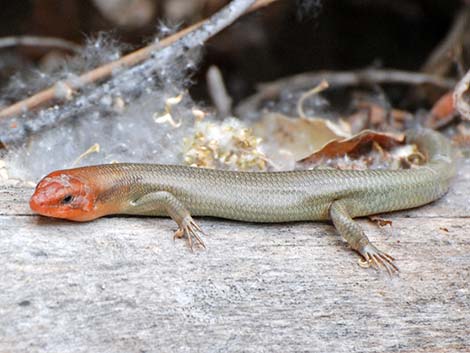 |
Diet: Primarily feeds on insects and spiders; also eats beetles and grasshoppers. When close to water, probably eats aquatic invertebrates. Habitat: Occur primarily in the Pinyon-Juniper Woodland and riparian habitats including canyon bottoms near water. Less common in Yellow Pine Forests, Sagebrush, Blackbrush, washes with Honey Mesquite and Catclaw Acacia, and desert riparian habitats in rocky areas or in areas with logs or leaf cover near permanent or intermittent streams. Breeding: Clutch of 3 to 9 eggs; laid during summer. Similar Species: One other species of skink, the Western Skink, occurs in southern Nevada. The Western Skink resembles an immature Western Red-tailed Skink, except that the Western Skink has dark lateral stripes that extend far onto the tail while those of the Western Red-tailed Skink end at the base of the tail. The tail color in the Western Skink always is blue. |
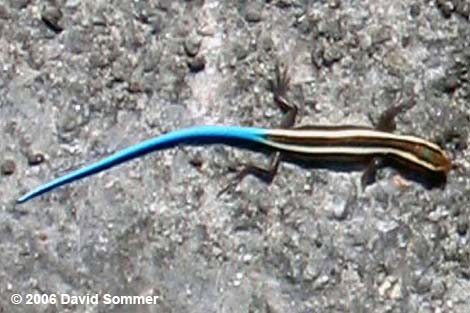 Juvenile (about 3-in long) on Mt. Charleston. The dark dorsal stripe ends at the base of the tail. |
Range: The species occurs in isolated populations in southern Nevada, southern and central California, central Arizona, and northern Baja California. The local subspecies, P. g. rubricaudatus, occurs in two isolated populations. One is located in mountain ranges in southwestern Nevada and southeastern California, and the other occurs in central and southern California. In Nevada, they are known from the Spring Mountains (Red Rock Canyon NCA and Mt. Charleston), the Sheep Mountains (Desert National Wildlife Range), and the Newberry Mountains near Laughlin. Comments: |
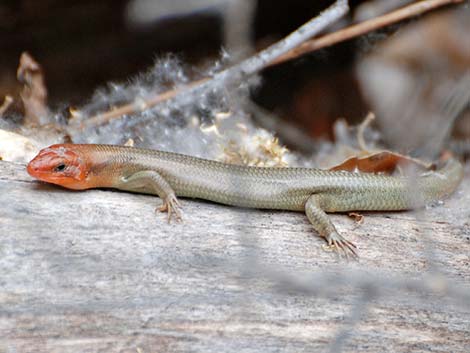 |
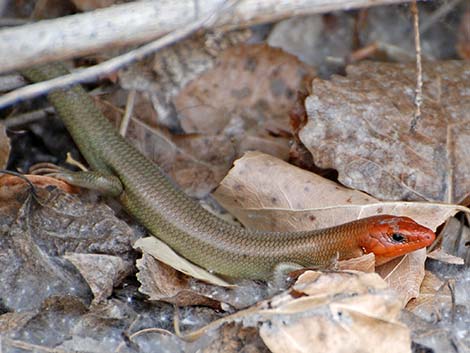 |
 |
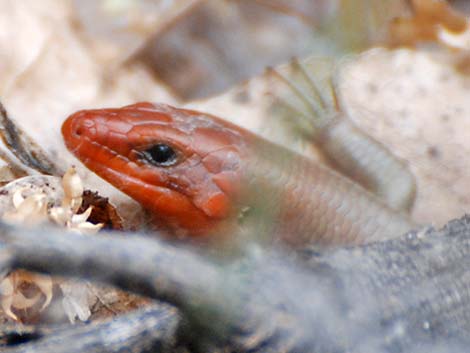 |
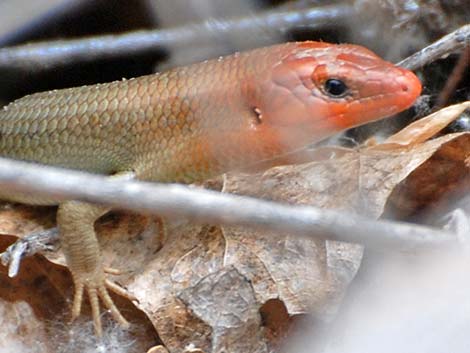 |
 |
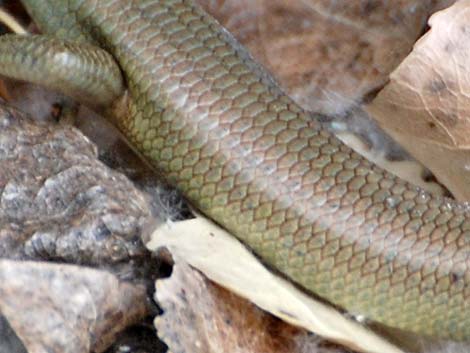 |
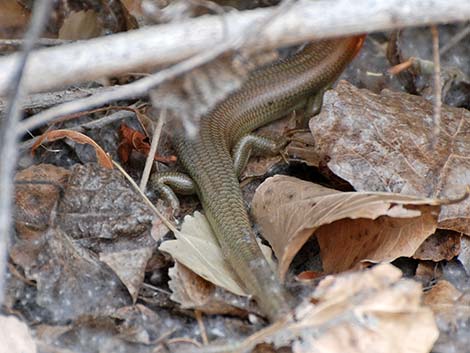 |
Note: All distances, elevations, and other facts are approximate.
![]() ; Last updated 231214
; Last updated 231214
| Lizards Around Las Vegas | Wildlife Around Las Vegas | Glossary | Copyright, Conditions, Disclaimer | Home |